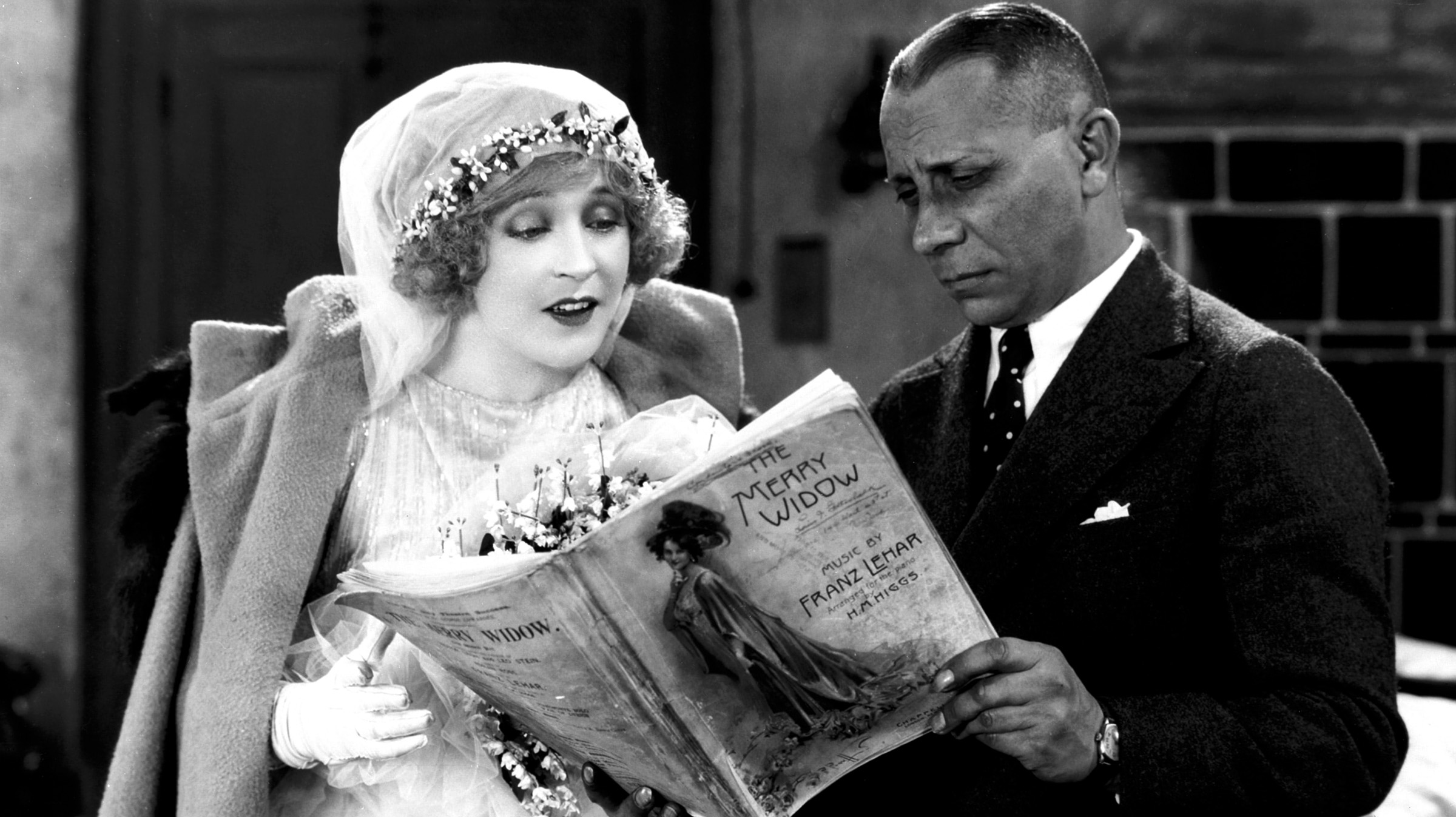When MGM producer Irving Thalberg agreed to give The Merry Widow to director Erich von Stroheim, he knew the director’s famed extravagance and continental experience would serve the rich, frothy story well. He made one stipulation: that both the Maxim’s nightclub and waltz scenes were to be retained from Franz Lehar’s original operetta. Other than that, von Stroheim was to have carte blanche.
Shooting started in November 1924 at Culver City. The whole picture—save for an introductory location shot and the duel—was photographed on studio sets. Amazingly, the entire picture took only 12 weeks to film.
During production, von Stroheim’s infamous perfectionism immediately asserted itself. Thalberg had cast John Gilbert in the role of Prince Danilo; von Stroheim, however, refused to hire a leading man that did not look the very model of a European officer. According to film historian Kevin Brownlow, the director told the star, “Gilbert, I am forced to use you in my picture. I do not want you, but the decision was not in my hands.” Gilbert later wrote that he felt utterly humiliated and walked out. “A furious session on the set resulted in my telling him where he could put The Merry Widow. I went into my dressing room and tore off my uniform. Von followed and apologised. Whereupon we had a drink …. That disagreement cemented a relationship which for my part will never end.”
When it came to the part of Crown Prince Mirko, von Stroheim had planned to cast himself, but Thalberg vetoed this proposition. He would not be led into another situation like Foolish Wives (1922). As director of that film, von Stroheim could not be dismissed because he was also the principal actor. Roy D’Arcy, who eventually played Mirko in The Merry Widow, was discovered when von Stroheim and his wife saw him doing musical comedy in a local theater.
The casting of the female lead, Mae Murray, was Thalberg’s idea. A former Ziegfeld Follies girl, she was years older than the part indicated, but she was popular, known all over the world as “the girl with the bee-stung lips.” Murray was unhappy that von Stroheim would not let her choose her own wardrobe every day, and thought his direction was pointedly making her role smaller and less glamorous than it could be, and that Thalberg had told her it would be. An accomplished dancer, she was worried von Stroheim was going to downplay the famous waltz that would be her big scene. Finally, she persuaded Thalberg that she could not go on like this. Von Stroheim was fired and replaced by the likeable Monta Bell. This was poor strategy on Mayer’s part for von Stroheim’s loyal cast and crew called a stage strike. Against their better judgement, Thalberg and Mayer hired him back, negotiating a truce with Murray. A key portion of that truce allowed Murray to choose some of her own costumes, some of which she had bought before she had even auditioned for the part. The front-page headline of the Los Angeles Record on Thursday, January 20, 1925 read “Mae-Von Sign Peace.”
Despite all its offscreen difficulties, The Merry Widow was a successful film for von Stroheim, and his only moneymaker. The film’s excellent camerawork was singled out as groundbreaking by the industry and the critics. Von Stroheim was credited with advancing the art form by using fewer intertitles and the film was hailed as good storytelling by the cultured and common alike. Attempts by certain organizations and leaders to censor the “decadent Europeanism” and risqué costumes were shouted down.
There is one other groundbreaking aspect to this film. It was the debut of a young actor who definitely looked smashing in a uniform: Clark Gable. He was one of the loyal von Stroheim extras and is visible in the waltz scene.
Presented at SFSFF 1997 with live music by Dennis James on the Mighty Wurlitzer

